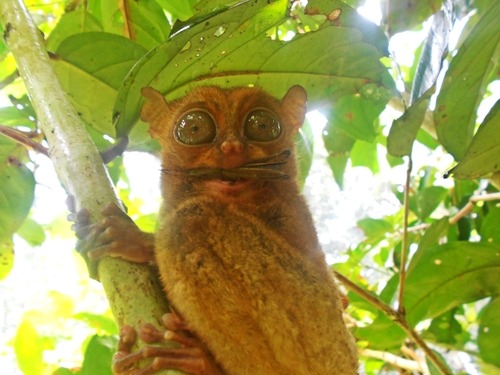Advertisement
Published: February 9th 2014
Please check out my primary blog: http://indonesianliving.tumblr.com/ for more about day to day living in Indonesia

Back in August 2013, I visited the Island of Belitung, off the East coast of Sumatra, just North of Java.
It was here that I met a research specimen by the name of Benji. He was a member of an Endangered species called Tarsiers, a small monkey found in Asia. While the species is remarkable, I soon found out that there were things which set the Belitung subspecies (<em style="outline: none 0px; -webkit-tap-highlight-color: rgba(0, 0, 0, 0); box-sizing: border-box;">Tarsius bancanus saltator) apart from the rest.
Tarsiers are the smallest species of monkey and are only found in Asia. They are nocturnal carnivores which typically prey on insects, but have been known to vary they diet to include birds, bats and small reptiles.
Physically they do vary, the Belitung Tarsier is typically smaller than its other cousins across Asia. They have extremely long hind legs, which allow them to jump great distances for their size and long fingers and toes to aid them in gripping branches.
Finally, while many humans have eyes which are bigger than their belly, the Belitung tarsier has the dubious owner of having eyes bigger than its brain.
Based purely on looks and anatomy, the specie is extremely unusual, but there are somethings which sets the Belitung sub species apart. It is territorial and mates with one partner for life, which is unusual for most tarsier species and finally it makes vocalizations, something which the research team in the heart of Belitung’s forest found out to their dismay.
I was extremely fortunate to meet Dr. Indra Yustian as I toured his newly founded tarsier reserve, I was even more fortunate to learn that he spoke excellent English, which allowed me to learn even more about the species than I could from his protegees.
Dr. Indra completed his PhD on the species, his enthusiasm is evident as he readily talks about the fascinating primate for what I can only imagine is the millionth time.
He explained to me that Benji did have a partner at one point, but they were separated for research purposes. A truly heartbreaking tale. It was when they tried to introduce a new mate to Benji that they learnt a lot about the species behavior.
Benji effectively killed his would be suitor by high pitched vocalizations, which are out of the realm of human hearing, thus confirming three things; 1st they are territorial, 2nd they mate for life and 3rd they do make noise. All three of these things are rare amongst other members of the species on other islands.
Hearing this naturally changed my perception of the apparently cute and charming Benji. He seemed so docile and inactive, it seemed hard to believe he was a creature capable of such obvious aggression.
Unfortunately, Benji is a captive animal. Such little was known about the species, that some were taken into captivity to learn more about them, While it is never ideal, you can see in the enthusiasm of his carers that Benji is well cared for, but his ease with humans will most likely mean he will never be released.
The threat of extinction for the Belitung tarsier is a two fold event, with humans naturally spear heading both. On one side, they are losing their much needed habitat to loggers and palm oil plantations and on the other they killed out of superstition by local hunters, who believe they are ill omens of hunting.
Dr, Indra and his staff are working tirelessly to ensure that this remarkable subspecies is not one of the many species that is going to head in oblivion in the coming years. So I highly recommend that if you visit the tropical paradise of Belitung, that you pay a visit to one of its smallest residents, at their own reserve in the Gunung Tajam forest.
There aren’t many left and your visit could help fund the project and if it should fail, then who knows how much longer you’ve got to see this remarkable species.
Advertisement
Tot: 0.22s; Tpl: 0.01s; cc: 10; qc: 53; dbt: 0.051s; 1; m:domysql w:travelblog (10.17.0.13); sld: 1;
; mem: 1.1mb
